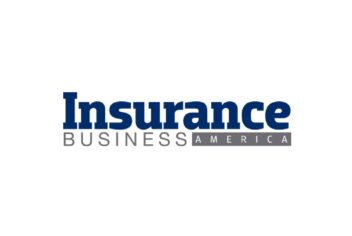Imagine on the local news, your nonprofit’s name on the side of a wrecked car, a member of your team is drunk and handcuffed at the scene, as rescuers attempt to save the people inside the other vehicle.
That’s an image no nonprofit can afford. And, it is completely preventable.
By simply owning and operating vehicles for its mission-related work, your nonprofit has already taken on a lot of risk. But when employees, volunteers, or board members are allowed to use those vehicles as their personal cars, your nonprofit could face potential risk for what that person does behind the wheel.
That’s too much risk for any nonprofit — and one that provides little benefit, if any, to your mission.
While insurance can help with your legal defense if your vehicle is involved in a collision, you’ll be much better served by setting firm limits for your vehicles — who can drive them, when they can be used, and the purposes they can be used for — before an incident happens.
Let’s look at a real claim NIA received and discuss what the nonprofit did (and did not do) that impacted the outcome of the claim.
The Nonprofit:
An education-focused nonprofit organization, which owned, operated, and maintained a small fleet of vehicles.
The Incident:
An employee of the nonprofit was given permission to drive a vehicle owned by the organization for their personal use, outside of normal business hours.
Late one night, the employee was driving the vehicle home and allegedly failed to stop at a traffic signal, and struck another vehicle, resulting in three passengers’ deaths and severe injuries to a fourth.
The employee was arrested at the scene on suspicion of driving under the influence of alcohol, which was later confirmed.
The Legal Action:
The employee faced numerous criminal charges, including driving under the influence of alcohol and multiple counts of vehicular manslaughter.
As the owner of the vehicle the employee had been driving, the nonprofit was also named as a defendant.
The families of the three deceased passengers sought damages; and the guardians of the sole survivor, a minor, sought damages and medical costs.
The Result:
During the assessment, it was learned that after-hours social gatherings of the nonprofit’s employees were common — and often involved alcohol. It was determined that the organization’s management was aware of this, condoned it, and even participated upon occasion.
That information, coupled with the fact that employees were permitted to use the nonprofit’s vehicles for personal transportation, weighed strongly in NIA’s decision to seek settlement with the affected parties.
What Did the Nonprofit Do Right?
Aside from the basic step of purchasing insurance for its owned vehicles, the nonprofit unfortunately did very little to help itself in this situation or to prevent it from happening in the first place.
This lack of oversight was reflected in the outcome — which left the nonprofit’s coverage maxed out, its reputation tarnished, and its overall insurability called into question.
What Could the Nonprofit Improve?
This heartbreaking situation was a needless tragedy — where poor choices coupled with lax supervision resulted in multiple deaths, families bereaved, and a worthy mission senselessly jeopardized.
For this nonprofit, there are many things that could have — and should have — been done that may have helped to prevent the deadly outcome that ultimately occurred.
These could have included:
- Creating rules for proper vehicle use that are evenly, consistently, and appropriately enforced, by defining:
- Who may (and may not) drive vehicles
- What purposes vehicles may (and may not) be used for
- Where vehicles may (and may not) be taken
- When vehicles may (and may not) be operated
- How vehicles should (and should not) be driven
- Which passengers (if any) are appropriate
- Taking consistent and appropriate action when the rules are not followed
- Installing vehicle monitoring and telematics to ensure appropriate use and safe driving
- Prohibiting the operation of the nonprofit’s vehicles for personal use
- Limiting vehicle use to mission-related work only
Finally, alcohol and nonprofit vehicles should never, ever be permitted to be used simultaneously — even the possibility of it can be weighed against your nonprofit when liability is being considered.
In this case, the fact that the nonprofit’s leadership condoned the staff’s after-hours drinking sessions — while knowing that some staff members were using nonprofit vehicles as personal transportation — counted strongly against the organization and was a major factor in NIA’s decision to pursue settlement of the claim.
This sort of incident shines a spotlight on a nonprofit’s culture and risk management practices — not just for the community, but for their insurance provider, too.
When a nonprofit’s leadership fails to manage their risks appropriately and a major incident is the result, it can cause an insurance provider to reconsider whether that nonprofit is even insurable.
For this nonprofit, a catastrophe of this magnitude on their record, combined with their documented lack of driver screening or other safety procedures, means that securing any kind of future auto coverage — from any insurer — will be either incredibly costly or just downright impossible.
How Can Your Nonprofit Avoid This?
When it comes to your nonprofit’s vehicles, the buck stops with you: You choose who gets to drive the vehicles, you decide the purposes they can be used for — and you bear the risk and responsibility for those decisions.
Because the road is a risk environment you can’t control — and the more time your vehicles spend on the road, the greater your potential risk becomes — good risk management means that you’ve got to be on top of the things you can control.
This starts with adopting good fleet management and fleet safety practices, such as:
- Never allow your vehicles to be driven for personal use
- Limit authorized vehicle usage to mission-related work
- Clearly define what qualifies as “mission-related work”
- Set evenly, consistently, and appropriately enforced rules for proper vehicle use, by defining:
- Who may (and may not) drive vehicles
- What purposes vehicles may (and may not) be used for
- Where vehicles may (and may not) be taken
- When vehicles may (and may not) be operated
- Who may (and may not) be transported in the vehicles
- Take consistent, appropriate action when the rules are not followed — unevenly or inconsistently enforced policies can be nearly as harmful as having no policy at all
- Establish practices for checking out, tracking, and securing all sets of keys
- Use a vehicle/driver monitoring program to improve drivers’ behavior and promote safety
- Install vehicle telematics and GPS tracking to ensure appropriate use and safe driving
- Vet all potential drivers:
- Conduct background checks and drug screenings
- Require driver training and driver safety courses (with regular refreshers)
- Note: These should be done before anyone ever gets behind the wheel
- Before any sanctioned staff event where alcohol may be present:
- Ensure all vehicles are checked in and accounted for
- All sets of keys must be secured and not accessible
To put it simply: For anything involving your nonprofit’s vehicles, consider the following questions:
- “Will this help our mission?”
- “Are the benefits worth the risk?”
If either answer isn’t immediately positive, it’s probably better to keep your vehicles parked.
Conclusion
Owning and operating a vehicle means your nonprofit is taking a risk — with people’s lives, with the organization’s reputation, and with a highly valuable asset. Your nonprofit accepted that risk for one reason only: To serve your community.
When you allow someone to use your nonprofit’s vehicle as their personal car, that means you could be assuming potential risk — whether they go straight home or straight to the bar.
Remember, every time your nonprofit’s vehicles are on the road — for any reason — they represent you and your mission to the community you serve.
Whether that’s a good thing or not is up to you.
From the Claims Files stories like the one above are intended to be informational in nature. Coverage will vary depending on language specific to your policy and your specific facts and circumstances.
Please contact your insurance broker and/or agent for your specific coverage implications based on your specific situation and follow any claims reporting procedures from your policy with your broker if there might be a claim.
Nothing in this story should be considered as legal advice or opinion and you should seek independent advice or legal counsel.





